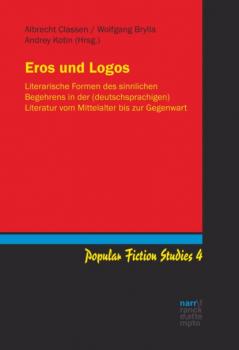ТОП просматриваемых книг сайта:
Popular Fiction Studies
Скачать книги из серии Popular Fiction StudiesАннотация
Die literarische Bearbeitung des Erotischen scheint eine der schwierigsten künstlerischen Aufgaben zu sein, hat aber stets noch provozierend und stimulierend gewirkt. Die damit verbundenen Probleme sind, abhängig von der Epoche, unterschiedlich: Im 19. Jahrhundert mussten sich die Autoren aller (un-)möglichen Metaphern bedienen, um Erotik zu verbildlichen. Andererseits stößt man in der mittelalterlichen Minnesang-Dichtung und in den Verserzählungen auf Manches, was die liberalsten Verleger auch heute noch in Verlegenheit bringen würde. Dieser Band zu den verschiedenen Sexualitätsbildern in der (deutschsprachigen) Literatur nimmt die historische Komplexität des Problemfeldes Sexualität anhand ausgewählter Textbeispiele literaturästhetisch in den Blick und nutzt analytische Kriterien, um neues Licht auf die verschiedenen literarhistorischen Epochen und kulturellen Bedingungen literarischer Erotik zu werfen.
Информация о книге
Автор произведения Группа авторов
Жанр Документальная литература
Серия Popular Fiction Studies
Аннотация
For a long time now, women have struggled for the vindication of their rights and for their visibility. This struggle may seem a story of success, maybe not complete or equal for all women, but at least one which slowly but surely carries with it the promise of equality for all women. However, a closer look reveals that in various fields of culture the representation of women frequently undergoes a manipulation which makes the image of women lose the intention initially attempted. This is often the case with adaptations of literary texts to the screen, when the initial literary message is changed because of, for example, marketing demands or some ideological stance. Rarely do we find the opposite case where the indifferent or emasculated original female characters are turned into guardians and/or apologists of feminine power. The present volume focuses precisely on the way in which the image of women is modified in films and TV series, when compared with the original literary texts.
Информация о книге
Автор произведения Группа авторов
Жанр Документальная литература
Серия Popular Fiction Studies
Аннотация
Germanic mythology is currently experiencing a significant boom in audiovisual media, especially among younger audiences. Heroes such as Thor, Odin and Siegfried populate television and comic series, films, and video games. When and why did this interest in Germanic mythology emerge in the media? Starting from the interpretation of the myths used by Richard Wagner in 'The Ring of the Nibelung' at the end of the 19th century, the contributions in this volume examine the reception of Germanic myths in audiovisual media in the course of the 20th and 21st century.
Информация о книге
Автор произведения Отсутствует
Жанр Документальная литература
Серия Popular Fiction Studies



